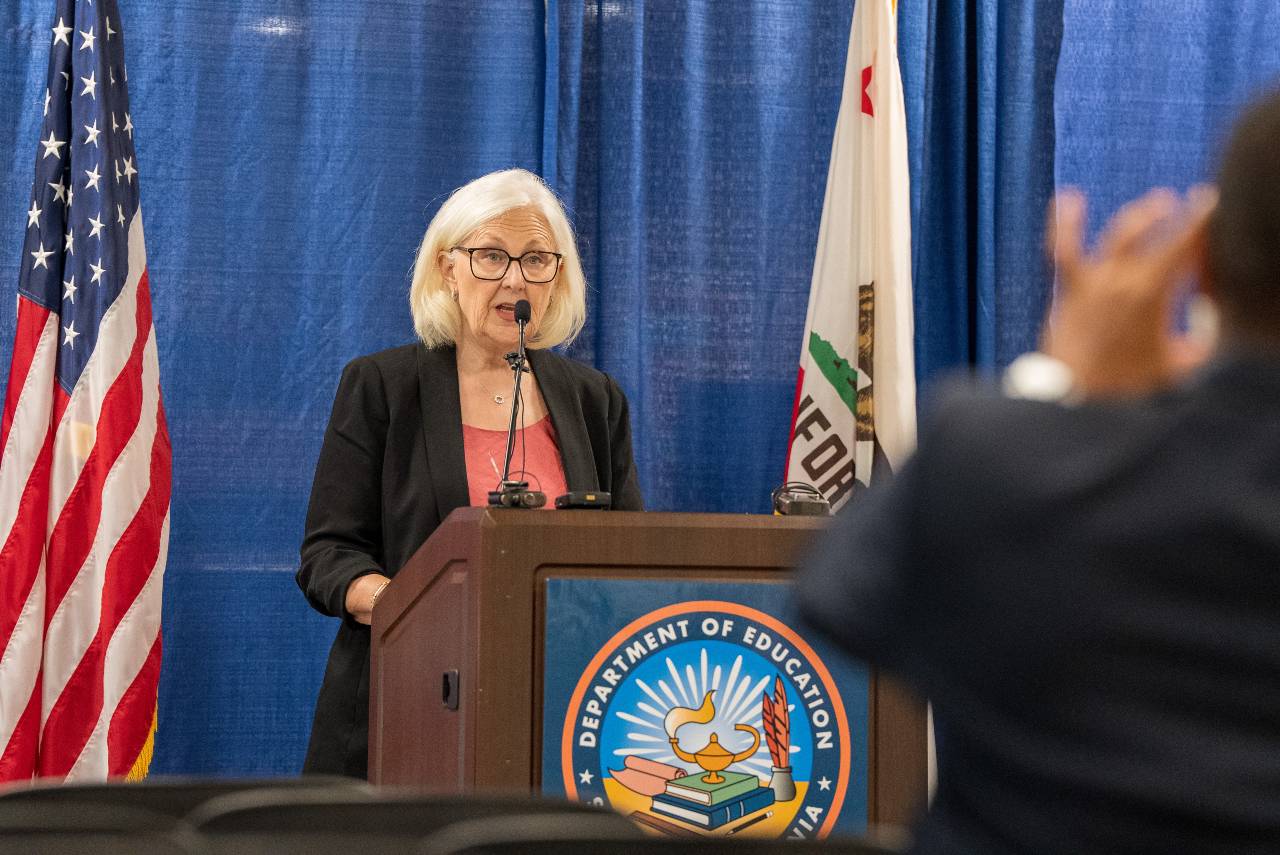Like most states in the nation, California is experiencing a teacher shortage. Teacher recruitment has largely been led by the 1,000 individual school districts in the state, and the California Department of Education historically has not engaged in direct teacher recruitment or support. That is changing with the launch of a statewide coalition to address teacher shortages on Aug. 14 with a press conference featuring education leaders, including CSBA President Susan Markarian, followed by an in-person and virtual summit.
Speakers including State Board of Education President Linda Darling-Hammond and California Commission on Teaching Credentialing Chair Marquita Grenot-Scheyer, who shared statistics on the current shortage as well as efforts well underway to address the issue. Darling-Hammond said the shortage really began in 2015. As a result of a number of programs to address teacher shortages — scholarships, residency programs and pathways for paraprofessionals — California was “one of just eight states in the 2020–21 school year that saw an increase in the number of people going into teaching, a sharp decline on people teaching with emergency permits, and increasing diversity at the same time with nearly half of our new teachers being teachers of color.”
Grenot-Scheyer reported promising numbers for the Teacher Residency Grant Program, completed by more than 620 candidates, with commission staff predicting more than 2,000 more candidates will take part in the program by its closure. In the original Classified School Employee Teacher Credentialing Program of 2016, 16,000 classified employees earned teaching credentials and staff predict another 4,000 will participate with funding provided in 2021. Grenot-Scheyer also explained how the recently passed Assembly Bill 130 allows teacher candidates to meet basic skills requirements through relevant coursework.
CSBA President Markarian, a trustee of Pacific Union Elementary School District in rural Fresno County, shared the unique challenges faced by rural districts in the areas of teacher recruitment and retention.
“The teacher shortage is typically illustrated through media stories focusing on large urban and suburban districts, but it’s even more profound in many of our small, rural school districts and more remote county offices of education,” she said. “This is the type of equity issue that too often goes unseen and unheard, but it has profound impact on academic achievement and life outcomes for the youth in rural communities and elsewhere.
“We don’t have access to a large pool of teachers because a lot of teachers don’t want to drive out to rural areas to teach,” Markarian continued. “We get teachers, we train them and then they quickly move on to higher-paying positions in the city. It’s a constant turnover.”
While commending the CDE and Legislature for enacting a series of long-term solutions to the teacher shortage, she noted that short-term relief is direly needed. She championed CSBA-sponsored Senate Bill 765 (Portantino, D-Burbank), which would provide some immediate relief by allowing retired teachers to return to the classroom more easily.
“Retired teachers are some of the best-equipped candidates to hit the ground running and provide high-caliber instruction and services to our students,” Markarian said. “Yet, currently, retired teachers must wait 180 days — a full school year — before returning to the classroom. And when they do return, a salary cap limits their earnings to approximately 50 percent of the normal salary for the position they are filling — that is less than one semester. SB 765 would temporarily waive the salary cap restriction and the 180-day mandatory waiting period [local educational agencies] must observe before hiring a recently retired teacher. Together, these two changes would provide a modest, yet much-needed tool LEAs can use to address our state’s school staffing shortages at a time when they’ve never been worse, and students have never needed our help more.”
Watch the full press conference here.





